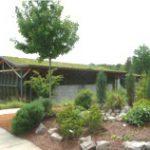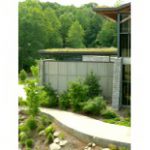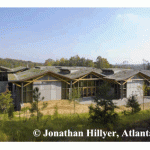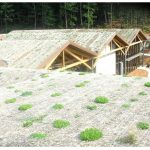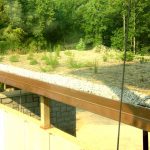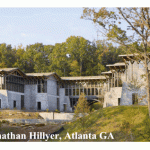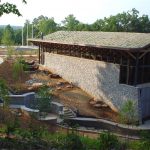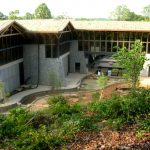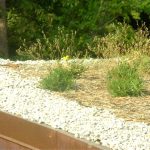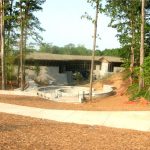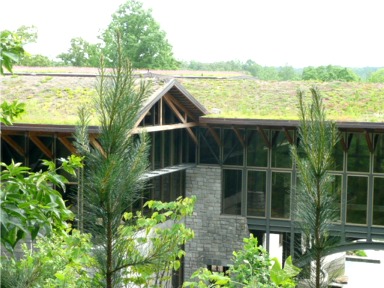
Additional Resources
The Gwinnett Environmental & Heritage Center is located at 2020 Clean Water Drive, Buford, GA 30519 and offers a wide variety of programs and recreation for K-12 education, adults and families including workshops, hikes, facility rentals and birthday party packages. More information is available at www.gwinnettEHC.com. Read “Gwinnett gets energy gold” of 7.11.07 here. See the profile at the Lord, Aeck & Sargent website here and see some photos from the American Hydrotech website. Learn more about the following companies in The Greenroof Directory: American Hydrotech; ERTH Products; and Emory Knoll Farms/Green Roof Plants.
Planted in April 2006, the Gwinnett County Environmental & Heritage Center has been awarded a gold level in the U.S. Green Building Council’s Leadership in Energy and Environmental Design (LEED) rating. The project has received a Best of 2007 award for Best Cultural Building from Southeast Construction, an Excellence in Design award from Environmental Design + Construction magazine, an Award of Excellence from the Associated Builders and Contractors of Georgia and an American Institute of Architects Honor Award. When constructed, the 4 – 4 1/2″ deep (growing media) 40,000-square-foot greenroof was one of the largest sloping greenroofs in the U.S.
As a result of the Gold LEED facility’s sustainable design strategies, there is no additional stormwater runoff; improved indoor air quality; 35% energy-use reduction; 50% water-use reduction; and demonstration of best management practices. Some of the most important LEED features of the building include pervious paving, bio-swales, wetlands and the largest sloping greenroof in the Southeastern U.S. A unique cascading water feature spans a dry ravine and functions like a heat exchanger. In lieu of using potable water, it uses non-potable, but very clean reuse water, leaving the nearby water treatment facility. This feature will save an estimated one million gallons of potable water annually
“The building and grounds model sustainable design and construction techniques to minimize disturbance to the site and maximize energy efficiency. The two-story, 59,000-square-foot building uses 75 percent less potable water and 35 percent less energy than a conventional building of the same size. Highlights include a 40,000-square-foot green roof…A cascading water feature draws non-potable reuse water from a nearby wastewater treatment facility and uses it to provide air conditioning, irrigate vegetation and flush toilets. The building uses regionally and locally harvested materials, a fan-assisted natural ventilation system and daylight harvesting,” (Duluth Weekly of 7.11.07, see below).
 Greenroofs.comConnecting the Planet + Living Architecture
Greenroofs.comConnecting the Planet + Living Architecture
